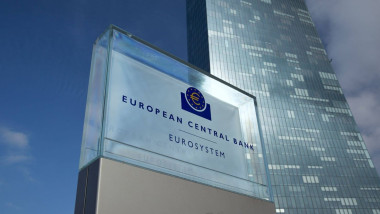Why Cash Will Remain King
Highlights
- Many investors have started to build a strategic exposure to cash. As they do so, they need to consider money market managers’ ability to assess credit quality, the likely trajectory of rates and ESG engagement.
- Although the next moves are likely to be down as inflation eases, rates should remain above 3% into 2025. Cash yields should remain well positioned with near-zero volatility.
- ESG selection is a source of opportunities, but also serves as a risk-reducer in money markets. Ostrum Asset Management (Ostrum AM) sees ESG as a significant component of asset selection in money markets.
Resources
The alternatives are fixed income markets, which may remain volatile throughout 2024 due to rates moves, slow economic growth and geopolitical risks. Dividend yields for European equities are likely to be around 3.6% in 2024 but, with European markets at all time highs, capital is at risk. And yields from 10-year Bund between 2.2% and 2.3% do not appear to offer value, by comparison.
“It’s rarely been truer that cash is king,” says Alain Richier, head of money markets at Ostrum Asset Management, an affiliate of Natixis Investment Managers. “If you can get 4% for cash, why buy long-maturity bonds with lower yields and higher volatility?”
Investors considering up to 20% cash allocations
There is no guarantee that any asset class will beat cash over the next year or two.
Better still, as a strategic allocation, there is extremely low correlation between cash and other asset classes, so investors can get instant portfolio diversification effects through money markets.
Xavier-André Audoli, Head of Insurance Multi-Assets says: “Cash is now an essential part of asset allocation and we know of institutional investors who are considering a 10%-20% allocation for 2024. You wouldn’t have seen this two years ago when yields were negative.”
The European Central Bank (ECB) raised interest rates on 10 separate occasions from July 2022 to October 2023, increasing the rate from -0.5% to 4% and putting to bed a decade of negative rates.
Although the next moves are likely to be down as inflation eases, rates will remain above 3% into 2025, according to Ostrum AM’s macro team whose macroeconomic scenario includes forecasts on growth, inflation, currencies and interest rates. Ostrum AM’s money market committee then analyses market data relative to current and anticipated interest rates curve and generates views on short-term yields.
“We see money markets earning better yields than most of bonds deep into 2025,” says Xavier-André Audoli.
Solid fundamentals among investment grade issuers
Rates are likely to fall only gradually, but what of the risk to credit quality from inflation?
While Ostrum AM sees defaults rising (on the high yield side), however under its 20-year historical average, it believes they will not rise sufficiently to impair money market portfolios, which are managed according to a “high credit quality” approach aiming to exclude all the issuers that are not considered strong and resilient according Ostrum AM internal ratings. One of the reasons is the enhanced money market regulations put in place following the financial crisis, which have driven up credit quality. The EU’s 2019 Money Markets Funds Regulation demands that investment firms must rate issuers themselves, rather than rely on agency ratings.
Under the rules, money market managers must adopt a cautious approach, investing only in “high credit quality issuers”, as identified by investment firms. Firms must use their own resources to analyse issuers, which requires sufficient numbers of staff with the appropriate qualifications. The intended result is a wide range of credit profiles across money market portfolios, rather than money market managers clustering around the same names.
Ostrum AM’s money market final investment universe is composed of about 500 issuers. “Our very large credit analysis team means it is possible to study the credit quality of a larger number of issuers than most of our peers,” says Richier.
Ostrum AM’s proprietorial evaluation and rating process is distinct from the rating agencies in that it is forward-looking, whereas the agencies rely on historical data. It can also rate instruments that are not evaluated by the agencies, leading to an active and convictions-based approach to money markets.
Richier says fundamentals remain solid for investment grade issuers, due chiefly to these companies’ larger capacity to mitigate the impact of higher commodities and energy costs by either absorbing or passing on the costs. But the current economic situation could impact companies’ credit quality”. He says : « This is why we recommend to be cautious with credit exposure, particularly given that credit spreads are at a 2-year low and given the geopolitical risks in Europe and in the Middle East ».
Over the short and medium terms, Ostrum AM believes that most of the companies it covers will be able to cope with a possible economic downturn.
Geography matters
Credit quality is further enhanced by country selection. Ostrum AM’s self-imposed rule is that all of its chosen issuers are located within certain OECD countries. In Europe, it considers companies only in the European Economic Area, excluding former Eastern Bloc countries but including the UK and Switzerland. In Asia, it invests in Japan, Australia and New Zealand. In the Americas, it allocates to the US and Canada only.
“We are very cautious in terms of our geographic approach,” says Richier. Some of Ostrum AM’s money markets peers allow investment in a range of other countries, he notes. “Our working assumption is that these countries are riskier than the top 25 OECD countries,” says Richier.
When financial markets are “normal”, issuers from countries outside this top 25 can provide higher returns. But as soon as there is a crisis or a spike in volatility, the credit spreads widen much more on these countries than on the top OECD countries.
Richier adds: “Our main aim is to protect capital and avoid losses. That’s why we impose this geographic rule, and why we are highly selective amongst periphery countries.”
Correlation between ESG and resilience
ESG selection is a source of opportunities, but also serves as a risk-reducer in money markets. Ostrum AM sees ESG as a significant component of asset selection.
Its money market investment process contains three ESG components: ESG scoring; a carbon intensity objective, and an anti-corruption strategy. “Even though money market assets are short-term by nature, long-term ESG issues can have a significant impact on returns,” says Richier.
Ostrum AM has identified material correlation between issuers with a good ESG rating and those that are resilient in money market portfolios. The correlation exists because regulations and decarbonisation objectives have forced companies to act with greater transparency. This provides material information regarding issuers’ risk profiles and, therefore, likely returns on their bonds.
Ostrum AM’s ESG process is guided by three considerations:
- sectoral policies and exclusions
- ESG integration – that is integration into the financial analysis of ESG factors impacting fundamental quality
- engagement
“We are big credit player so we can and need to engage with issuers on ESG issues,” says Richier. “Every year we engage with about 200 issuers. This is critical if we want our portfolio to overperform for each of the Environmental, Social and Government pillars.”
Simple can be best
Many investors have started to build a strategic exposure to cash. As they do so, they need to consider the money market manager’s ability to assess credit quality, the likely trajectory of rates and ESG engagement.
“We believe money market funds are a ‘must have’ allocation for investment portfolios,” says Audoli. “Sometimes, the simplest strategies really are the best. This is one of those times.”
Published in March 2024
An affiliate of Natixis Investment Managers.
French Public Limited liability company with board of Directors.
Share capital €50 938 997.
Regulated by the Autorité des Marchés Financiers (AMF) under no. GP 18000014
RCS Paris n° 525 192 753.
43 avenue Pierre Mendès France 75013 Paris, France.
www.ostrum.com
Natixis Investment Managers
RCS Paris 453 952 681
Share Capital: €178 251 690
43 avenue Pierre Mendès France
75013 Paris
www.im.natixis.com
This communication is for information only and is intended for investment service providers or other Professional Clients. The analyses and opinions referenced herein represent the subjective views of the author as referenced unless stated otherwise and are subject to change. There can be no assurance that developments will transpire as may be forecasted in this material.





 Short-Term Credit: More Than a Car Park for Cash
Short-Term Credit: More Than a Car Park for Cash
 Sustainable Bonds: Unlocking New Dimensions in ESG Investing
Sustainable Bonds: Unlocking New Dimensions in ESG Investing
 Duration and the Climate Transition: Risk or Opportunity for Sovereign Bonds?
Duration and the Climate Transition: Risk or Opportunity for Sovereign Bonds?